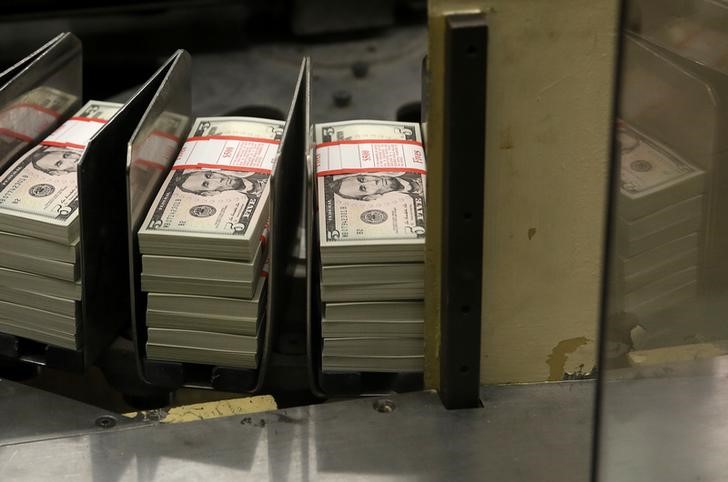Intel stock extends gains after report of possible U.S. government stake
* Graphic: World FX rates in 2020 https://tmsnrt.rs/2RBWI5E
By Ritvik Carvalho
LONDON, August 3 (Reuters) - The dollar rallied against a
basket of rivals on Monday as a squeezing out of crowded short
positions combined with safe-haven demand gave the currency some
respite after its worst monthly performance in a decade.
The dollar index =USD , which measures the greenback
against a basket of leading currencies, lost more than 4% in
July, its worst month since September 2010. It is down 10% from
its peak in March.
Analysts put the slide down to waning safe-haven appeal as
financial markets recover, market expectations for further
easing of U.S. monetary policy and a lack of agreement among
U.S. lawmakers on further fiscal stimulus. Falling U.S. bond
yields have also been cited as a factor.
Speculators' net shorts on the U.S. dollar have soared to
their highest since August 2011 at $24.27 billion, Reuters
calculations and U.S. Commodity Futures Trading Commission data
show. IMM/FX
A partial squeezing out of that crowded short position may
be the reason for the dollar's rally in the past couple of days,
analysts said, also citing rising geopolitical tensions between
the United States and China.
"There's usually something that trips global markets up in
August, and this year might not be different given the growing
list of market risks," said Viraj Patel, global FX and macro
strategist at Arkera.
"Given the way that risky assets have rallied in recent
months, this rising geopolitical threat could lead to a squaring
off in positions and potential reversal of recent trends that
would help the dollar recoup its recent losses."
The dollar index was up 0.2% =USD , with the greenback
higher against all currencies in the basket on which the index
is based. JPY= CHF= SEK= EUR= GBP= CAD=
"The factors that have seen DXY (the dollar index) fall 10%
from its spike high in March are still in place and we expect a
‘sell the rally' mentality to develop through August," ING
strategists said in a note to clients.
"We'll also be focusing on (the U.S.) Congress, where the
$600 per month unemployment benefit boost has now expired and
the parties are wrangling over the design of the Phase IV
stimulus package. Delays here may upset asset markets, which
typically tend to struggle a little more in August."
TRANSATLANTIC GAP
Investors have reasons to worry about the U.S. outlook as
policymakers struggle to clinch a deal to pump more money into
the world's largest economy. A growing U.S. fiscal deficit to finance the stimulus
prompted Fitch Ratings to revise its outlook on the United
States' triple-A rating to negative from stable. While there has been no immediate market reaction to the
downgrade, the European Union gained a lift from Standard and
Poor's decision to upgrade its rating outlook on the bloc to
positive from stable. Sentiment on the euro has improved after EU leaders agreed
last month to a 750 billion euro ($882 billion) economic
recovery fund while also taking on debt jointly in a show of
regional cooperation.
The single currency traded at $1.1763 EUR=EBS in morning
trade in London, off a two-year high of $1.1908 hit last week.
($1 = 0.8500 euros)
<^^^^^^^^^^^^^^^^^^^^^^^^^^^^^^^^^^^^^^^^^^^^^^^^^^^^^^^^^^^
Dollar's worst monthly performance in a decade https://tmsnrt.rs/3k28ghc
^^^^^^^^^^^^^^^^^^^^^^^^^^^^^^^^^^^^^^^^^^^^^^^^^^^^^^^^^^^>
